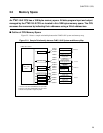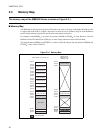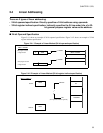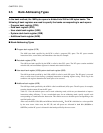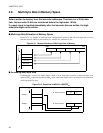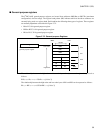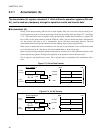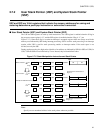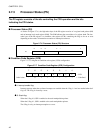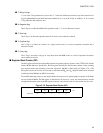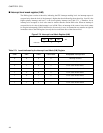
37
CHAPTER 2 CPU
2.7 Registers
The F
2
MC-16LX registers are largely classified into two types: special registers in the
CPU and general-purpose registers in memory. The special registers are dedicated
internal hardware of the CPU, and they have specific use defined by the CPU
architecture. The general-purpose registers share the CPU address space with RAM.
The general-purpose registers are the same as the special registers in that they can be
accessed without using an address. The applications of the general-purpose registers
can be specified by the user however, as is ordinary memory space.
■ Special Registers
The F
2
MC-16LX CPU core has the following special registers:
• Accumulator (A=AH:AL) : Two 16-bit accumulators (Can be used as a single 32-bit accumulator.)
• User stack pointer (USP) : 16-bit pointer indicating the user stack area
• System stack pointer (SSP) : 16-bit pointer indicating the system stack area
• Processor status (PS) : 16-bit register indicating the system status
• Program counter (PC) : 16-bit register holding the address of the program
• Program bank register (PCB) : 8-bit register indicating the PC space
• Data bank register (DTB) : 8-bit register indicating the DT space
• User stack bank register (USB) : 8-bit register indicating the user stack space
• System stack bank register (SSB): 8-bit register indicating the system stack space
• Additional bank register (ADB) : 8-bit register indicating the AD space
• Direct page register (DPR) : 8-bit register indicating a direct page
Figure 2.7-1 is a diagram of the special registers.



